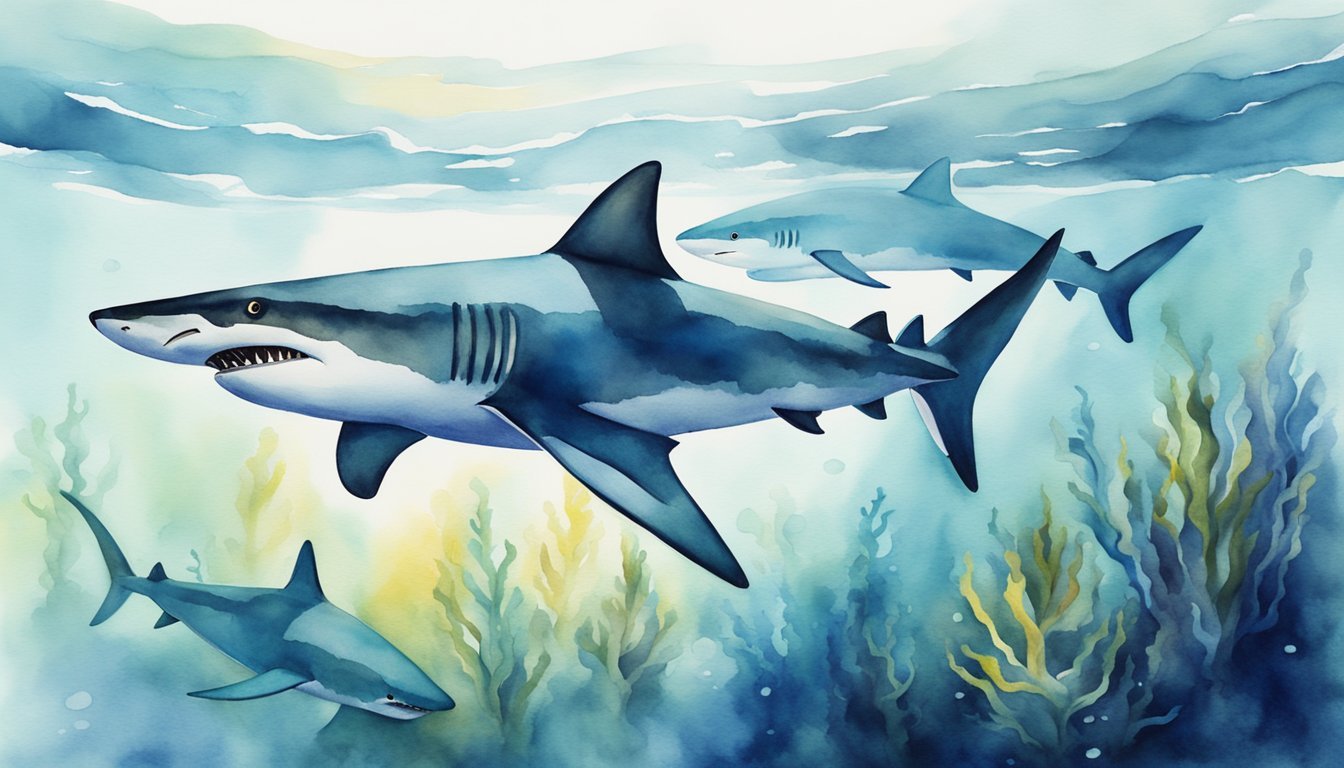Understanding Deep Sea Sharks
Species Diversity and Habitat
Deep sea sharks inhabit some of the most extreme environments in the ocean. A variety of species exist, each adapted to its specific habitat. Some examples include the goblin shark, Greenland shark, kitefin shark, and megamouth shark.
The goblin shark is sometimes called a “living fossil” since its lineage dates back nearly 125 million years. It can be found at a depth of 1,200 meters. The Greenland shark, on the other hand, is known to live in the cold waters of the Arctic and North Atlantic at depths between the upper continental slope and the abyss. The kitefin shark resides at even greater depths of 600 to 1000 meters.
Physical Adaptations
As deep sea sharks live in an environment with limited light, species such as the goblin shark and Greenland shark have developed unparalleled eyesight. The goblin shark, for example, possesses large extending jaws which allow it to snap prey up in a fraction of a second.
Notable organs in deep sea sharks are their bioluminescent photophores, which allow them to luminesce in the dark. The kitefin shark is one of the world’s largest glowing animals, using bioluminescence as a form of camouflage when hunting prey.
In order to maintain buoyancy and streamline movement at these great depths, deep sea sharks have developed unique skin types and specialized organs. While some sharks have softer, more pliable skin, others possess tough scales that contribute to their agility and durability. The Greenland shark, for instance, has a layer of gelatinous tissue which helps it maintain buoyancy at greater depths.
These physical adaptations and habitat preferences showcase the incredible diversity and ability of deep sea sharks to thrive in some of the most extreme environments found on Earth.
Behaviors and Threats to Deep Sea Sharks

Diet and Feeding Patterns
Deep sea sharks have a diverse and specialized diet, feeding on a variety of prey. Some species, like the greenland shark, primarily feed on marine mammals, such as seals and fish. Others, like the frilled shark, have a diet that consists mainly of squid. As these sharks are adapted to living in extreme conditions, they often feed on plankton, which is a primary food source in deep-sea environments.
Researchers have discovered some interesting feeding patterns among deep sea sharks. For instance, blue sharks are known to descend as far as 1,900 feet (600 m) from the surface daily, likely to hunt deep-sea prey.
Reproduction and Lifespan
The reproductive process of deep sea sharks is a fascinating area of study. Some species are oviparous, meaning they lay eggs, while others are viviparous, giving birth to live young. One notable example is the greenland shark, which has an extremely slow growth rate and a long gestation period, resulting in a lifespan that can exceed 400 years.
However, the long reproductive cycles and limited population sizes of many deep sea shark species make them particularly susceptible to the impacts of human activities, such as overfishing and habitat destruction.
Conservation and Human Impacts
Deep sea sharks play an essential role in marine ecosystems as apex predators. However, they face several threats from human activities, including overfishing and bycatch in fishing nets. Limited oxygen concentrations and extreme pressure in deep-sea environments may also affect their populations.
Conservation efforts, such as those by the National Oceanic and Atmospheric Administration, aim to protect these unique creatures and their ecosystems. Researchers aboard research vessels continue to study deep sea sharks and their behavior to better understand their needs and how to best ensure their survival.

